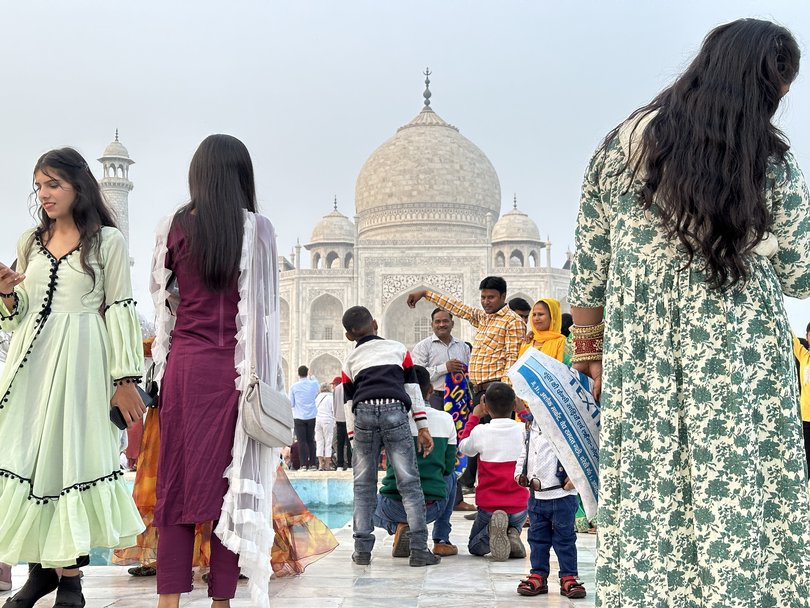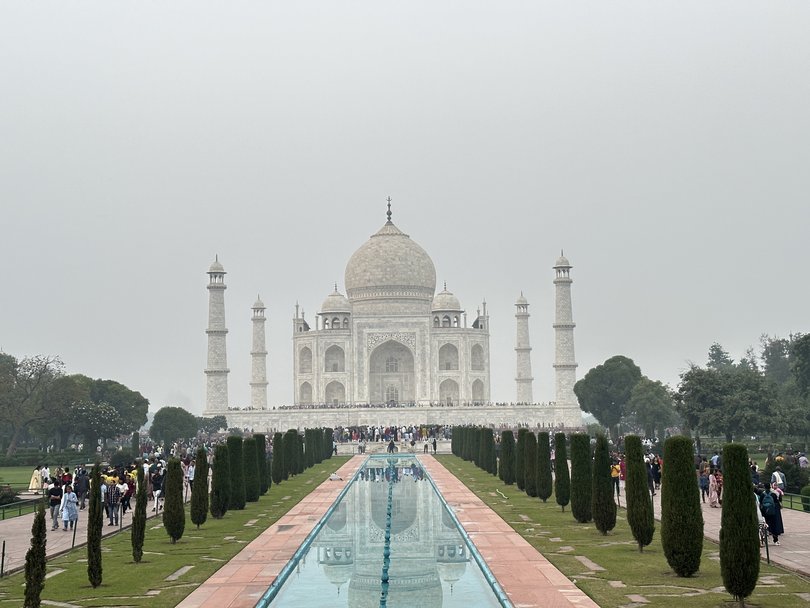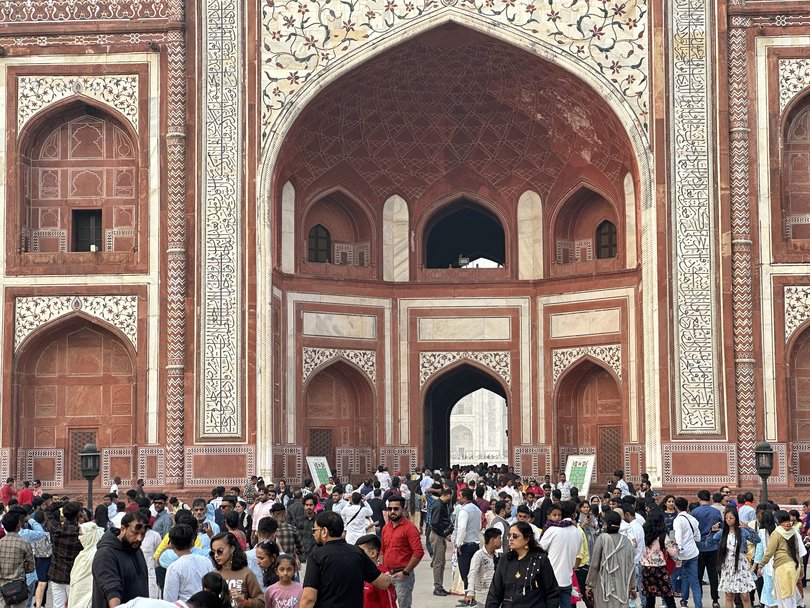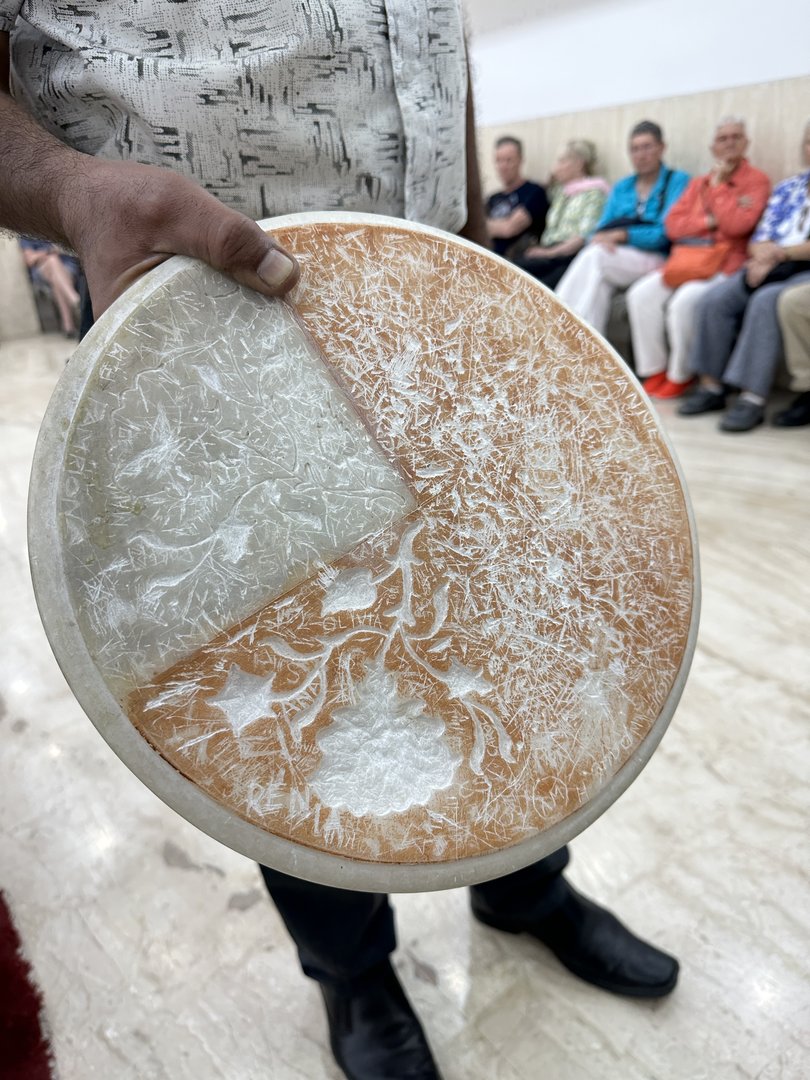Pic of the bunch: Practical advice on how to capture the colour of India’s Taj Hamahl

Tourists try to time their visit to the Taj Mahal to be here when it’s quiet, so they can pretend they are the only ones there.
To do that, I’ve usually come to the East Gate entry very early here in Agra, in India.
But with poor air quality, being there in the very soft light of early morning can mean the white marble building is actually a bit swallowed up by the smog and hard to see.

ROAM. Landing in your inbox weekly.
A digital-first travel magazine. Premium itineraries and adventures, practical information and exclusive offers for the discerning traveller.
By continuing you agree to our Terms and Privacy Policy.So, today, I’ve done away with that plan, and come in the full light of mid to late afternoon, I’m here in a throng.
The world people of India have come to see the Taj, and being part of this celebration really enhances the moment.
It feels like a celebration. It feels like a party.
Girls are kaleidoscopic in colourful saris and salwar sets — pants with a long, bright chemise and scarf worn across the neck, with the two long ends adrift down the back.
My pictures of them taking pictures and posing for them are, I think, my favourites ever taken here. I feel I am photographing a joyous musical, and not the set.
Young men walk hand in hand in designer jeans.
There are wedding couples with a Bollywood sheen, followed by hired photographers in beige safaris jackets, their pockets stuffed with lenses.
Everyone is taking pictures with phone cameras, of course. Couples pose for what is clearly an engagement or post-marriage moment, and young men in reflective sunglasses, black hair slicked back and shiny, like Bollywood stars.
Matriarchs simply want the moment recorded and four men in smart collarless and sleeveless Nehru jackets pose in a line like football defenders, their hands folded in front of them.
Kids lean over with their arms out, fingers pinched together so that, with the photographer at a distance, it looks like they are holding the top of the Taj’s dome.
My pictures of them taking pictures and posing for them are, I think, my favourites ever taken here. I feel I am photographing a joyous musical, and not the set.
I suddenly realise I’ve actually forgotten about the building itself.

BACK TO THE BUILDING
The Taj Mahal’s Islamic symmetry draws people to walk straight towards it, after stopping for hundreds of photographs first, of course.
The central walkways, beside these famous, reflective, rectangular ponds, is choccas.
But walk parallel, 50m to either side, and you are strolling through trees, flanked by lawns.
Another 50m to the side and I can guarantee you will be pretty much on your own. In fact, today, there’s not another person in sight.
I take my standard photos of the Taj Mahal as a piece of beautiful architecture, of course, but it is not those photographs that I like best.
It is the pictures where it is framed by trees, with a skirt of lawn.
A STORY OF LOVE
An Indian friend once told me there are only two classes of people in the world — those who have seen the Taj Mahal and those who have not.
He may well have been joking, but he may well be right.
The Taj Mahal is an architectural statement of Mughal emperor Shah Jahan’s love for wife Mumtaz Mahal, who died during the birth of their 14th child. It was built from about 1631 to 1653 by 20,000 workers, directed by the Islamic world’s leading craftsmen.
They came from India, Persia and Turkey.
A million tonnes of the hard local marble, carried by 3000 elephants, clad the brick building.

Yet, for all that weight, it appears to float, as it was built on piles and then a platform. The four minarets at the corners balance it, leaning outwards fractionally to appear perpendicular.
When it comes to detail, yellow marble, jasper and jade were cut by hand, polished and inlaid.
I see exactly the same process, and even some of the specific patterning, repeated in the marble inlay workshops of Agra.
Small pieces of malachite, jasper, lapus lazuli, mother of pearl and carnelian — the exquisite fire stone, that glows under the light of a torch — are cut and shaped on a grinding wheel, and then inlaid by hand.
And I have a piece at home now, as a piece the size of a decent cheese platter with delicate inlay, each flower with 47 pieces, might take two craftsmen 50 days to make, and cost $400.

WHILE IN AGRA
+ A 45-minute drive from Agra, Fatehpur Sikri is a fort built by King Akbar the Great. Built between 1569 to 1574 of red sandstone, it was occupied for only 12 years, until both the quantity and quality of the water supply led to its downfall proved. Akbar knew it was going to be difficult to live here, but wanted to live near the Sufi saint Salim Chisti. Akbar, who was illiterate, had readers to vocalise the 4000 books in Fatehpur Sikri’s library. And it was here that he hosted a two-year meeting of Jesuits, Hindus, Christians, Muslims, Buddhists, astrologers, mystics and other religious and theological thinkers to try to come up with “the religion of one God”. In Fatehpur Sikri’s hall, called Ibadat Khana (House of Worship, or theological thought) they discussed matters of belief and their combined thoughts formed a new movement called Din-i-Ilahi, which is said to have pretty much died out with him.
+ The walled city that is Agra’s Red Fort was developed and expanded by Moghul rulers over 250 years. But it was Shah Jahan — the grandson of King Akbar the Great — who was mostly responsible for making what we see today. It has cooling gardens, a marble mosque, and a Hall of Public Audience.
Originally published as From the Taj Mahal to an even bigger idea in India
